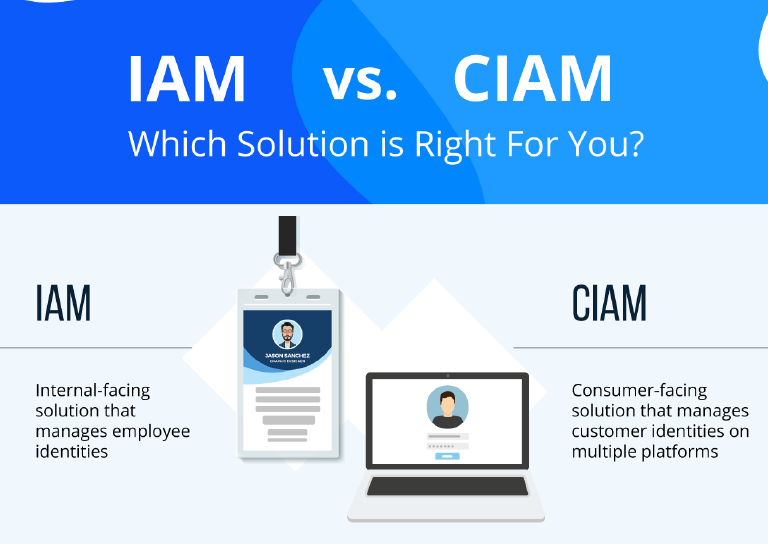TECHNOLOGY
Best Practices for Business Success

Identity and access management (IAM) solutions significantly impact a company’s overall success.
Enterprises have been using it for years to navigate their digital transformation journey.
Most enterprises serving their customers across the globe are relying on conventional IAMs that may solve the fundamental identity challenges but are impotent when it comes to advanced threat vectors.
Whether it’s scalability-related concerns, security issues, or compliance, the traditional IAMs may not be the most appropriate fit for today’s digital business landscape, mainly when serving various customers online.
On the other hand, cutting-edge customer IAMs are revolutionizing how businesses cater to their customers on web platforms and applications. Let’s look at some aspects of the new-age customer IAM and how they’re helping businesses navigate the complexities of conventional IAMs.
IAM vs. Customer IAM – What’s the Basic Difference?

A couple of years back, identity and access management were just managing employee identities and access within a closed network of an enterprise with less emphasis on security and user experience.
IAM aims to manage access to resources/systems within a network and serve hundreds or thousands of people. And thus, it was suitable for a limited number of people working under a single entity.
However, when we talk about managing millions or billions of customer identities, specific challenges are hard to address with traditional IAM since its capacity, security, and user experience aren’t up to the mark.
These IAM challenges include:
-
Non-Scalability: One of the significant issues with conventional IAMs is that they can’t be scaled beyond a specific limit. And thus, it can’t be used with systems that directly cater to customers through online platforms or mobile applications since they have to scale in real-time to serve a vast audience simultaneously.
-
Limited Security: Old IAM systems were designed for organizational use. Hence little emphasis was placed on security. But in the case of customer IAM, robust security should be the top priority since customer privacy and information security can’t be compromised.
-
Poor User Experience: Organizations leveraging the traditional IAMs aren’t concerned about the overall user experience since they use it for their employees. However, customer experience is one of the biggest game-changers when it comes to enhancing growth and increasing customer satisfaction.
-
Non-Compliance: Though most enterprises know that certain countries/states require enterprises to meet their privacy and data security regulations, many aren’t adhering to the same. On the other hand, customers are aware of their privacy and the importance of their data security. Hence, a robust customer IAM becomes the need of the hour.
Best Practices for Customer IAM in the Modern Digital Landscape
With time, organizations have learned that they must move beyond the conventional IAM and put their best foot forward in adopting a robust customer identity and access management solution.
As a result, most organizations incorporate cutting-edge CIAMs capable of solving the complex challenges of security, user experience, and scalability; many still face particular challenges with modern CIAM deployment.
Let’s look at these challenges and learn what organizations must consider while advancing toward a modern CIAM.

Auto-Scalable Infrastructure
If an enterprise is thinking of catering to millions of users online, it must have a robust auto-scalable infrastructure to meet its real-time demands.
Organizations may choose a scalable CIAM infrastructure suitable for a limited number of people or if the number of users is fixed. However, if they aren’t sure how many people would be authenticating or authorizing themselves, they must choose an auto-scalable CIAM infrastructure.
In today’s era, millions of people are using OTT and other similar platforms for entertainment. And their requests for resources and authentication scale in real-time. Hence, an auto-scalable CIAM becomes mandatory to cater to such huge demand.
Quick Platform Migration
One of the biggest challenges of shifting to a robust CIAM platform is migrating existing IAM data to the new platform.
The entire migration process could be hectic and require much time and resources. However, if businesses choose a smart CIAM that features quick migrations for customers with zero downtime
Also, new-age CIAMs support third-party integrations where enterprises can integrate third-party applications into the platform once the migration process is completed.
Adaptive Authentication for High-Risk Scenarios
While most CIAMs offer multi-factor authentication as a security measure, certain high-risk situations may require additional security measures.
Here’s where the critical role of adaptive authentication comes into play.
Adaptive authentication automatically detects unusual authentication behavior and adds another layer to improve overall account security.
This helps improve customer data security even if one or two authentication parameters are compromised.
To Conclude
The conventional IAM could be a good option for managing identities within an organization, but it can’t solve the challenges of modern customer identity management.
On the other hand, customer identity and access management (CIAM) have revolutionized how businesses deliver secure and seamless user experiences to their customers.
Businesses thinking of thriving growth shouldn’t ignore the importance of incorporating a modern CIAM solution that can offer the features mentioned above.















